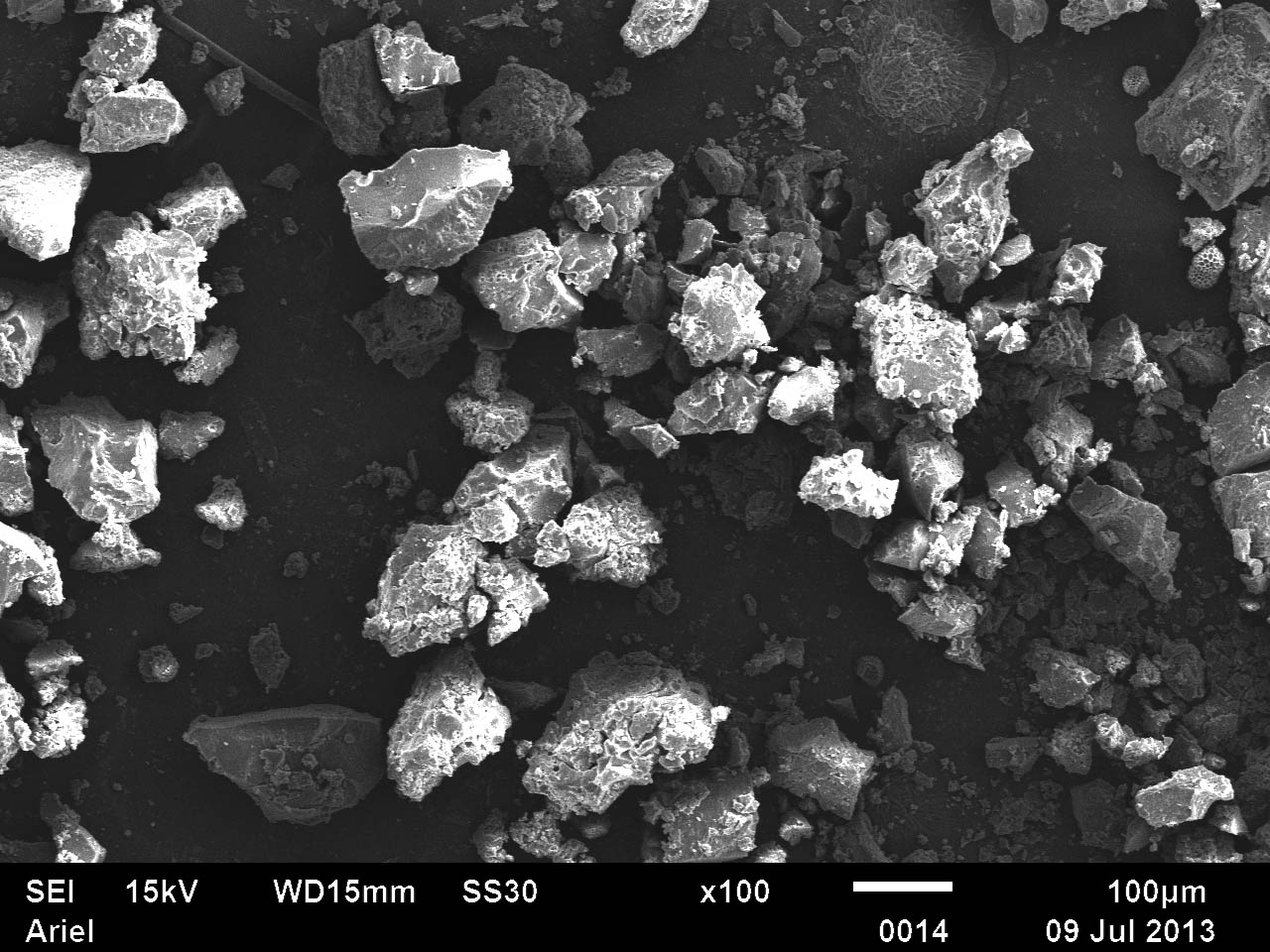Reports: UR552043-UR5: Manufacturing and Study of the Properties of Liquid Marbles Obtained with Crude Oil and Liquid Petroleum Products
Edward Bormashenko, PhD, Professor, Ariel University
The research was performed according to the milestones supplied in the proposal.
1. Optical and ESEM microscopy study of the structure of the coating shell.
Liquid petroleum marbles were coated with the fluorinated decyl polyhedral oligomeric silsesquioxane (FD-POSS) hydrophobic powder according to the process reported in the narrative report summarizing the first and second years of the proposal. For preparing liquid marbles, drops of crude petroleum oil with the volumes 20–170 µl were deposited with a precise micropipette on a superoleophobic surface (see Bormashenko et al. Applied Surface Science 270 (2013) 98– 103) covered with a layer of FD-POSS powder. Crude oil (petroleum) was supplied by Givot Olam Oil Ltd. Optical microscopy was carried out with SWIFT M4000-D microscope. The topography of the FD-POSS coating was studied with a high resolution SEM (JSM-6510 LV) and ESEM (environmental scanning electron microscopy) devices.
ESEM study was performed with a Quanta 200 FEG (field emission gun) instrument. SEM images of the FD-POSS particles are supplied in Figs. 1–2. Highly developed topography of FD-POSS particles, displayed in Fig. 2, strengthening their pronounced inherent hydrophobicity, due to the possible Cassie-Baxter regime of wetting is noteworthy. The results of this study were reported: Bormashenko et al. Liquid marbles containing petroleum and their properties, Petroleum Science, 2015, 12 (2) 340–344.
2. Study of the stability of liquid marbles containing liquid petroleum products.
Liquid marbles remained stable for a long time (up to several months) and demonstrated robustness and low friction under rolling. Marbles remained stable on a diversity of solid and liquid substrates including water and NaCl water solutions, as shown in Fig. 3.
We studied the stability of the motion of marbles containing petroleum with a simple lab made device depicted in Fig. 4: 12 µl crude petroleum marbles rolled downhill and the velocity U was measured with the rapid camera at the origin of the horizontal portion of its pathway (see Fig. 4). Marbles rolled on the horizontal glass slides across the distance S necessary for their eventual deceleration, and the stopping distance of marbles S was measured. Series of 10 experiments were performed for establishing the averaged value of the stopping distance.
The analysis of friction of rolling liquid marbles, containing petroleum was carried out. The energy dissipation rate dE/dt under rolling is given by:
where dEvisc/dt describes the viscous dissipation, and dETL/dt is the energy dissipation rate due to the disconnection (de-pinning) of the triple line. The viscous dissipation may be calculated as:
Here Vd is the volume over which viscous dissipation occurs, h is the viscosity of the liquid, and vector u is the velocity field in the droplet. When a liquid marble contains a sufficiently viscous liquid (such as glycerol) it will stop rolling mainly by the viscous dissipation. The stopping distance of the marble S possessing an initial velocity of the center of mass U may be estimated as:
where R = (3V/4p)1/3 is the radius of the marble (V is its volume), a is the radius of the contact area, ρ is the density, and υ is kinematic viscosity (Bormashenko E, Bormashenko Y and Gendelman O. Langmuir. 2010. 26: 12479–12482). However, we demonstrated that for liquid marbles containing petroleum, the energy dissipation under rolling is mainly due to the disconnection (de-pinning) of the triple line, consuming the energy (Bormashenko et al. Liquid marbles containing petroleum and their properties, Petroleum Science, 2015, 12 (2) 340–344).
In addition we studied the stability of liquid marbles containing petroleum exposed to electric field. The 20 µl crude petroleum oil marbles were placed on a glass slide between two plain electrodes (as shown in Fig. 5); the electric field was increased from 0 to 106 V/m, as shown in Fig. 5. When the electric field reached the threshold value of about 1.2X106 V/m, the marble started to stretch until it touched the upper electrode, as depicted in Fig. 6.
The calculation of the critical electrical field leading to the destabilization of liquid marbles containing petroleum was performed.
3. Study of the possibility of manufacturing of emulsions with liquid marbles comprising liquid petroleum products.
We demonstrated the possibility of manufacturing of stable water emulsions using the marbles containing liquid petroleum. In addition we revealed the phenomenon of self-propulsion of liquid marbles containing mixtures of rapidly and slowly evaporating liquids. The results were reported in the paper: Bormashenko Ed. et al., Self-propulsion of liquid marbles: Leidenfrost-like levitation driven by Marangoni Flow, J. Phys. Chem. C 119 (2015) 9910−9915.
4. Analysis of the results and preparing scientific reports and manuscripts.
Students involved in the research gained skills in the synthesis of fluorinated decyl polyhedral oligomeric silsesquioxane (FD-POSS) powder, the manufacturing superoleophobic surfaces, preparing liquid marbles, optical microscopy, SEM and ESEM study of organic surfaces, use of the optical goniometer and the Wolfram Mathematica software, use of the laser technique and cavitation rheology method, understanding the phenomenon of resonance, the notion of eigenfrequency and preparing scientific manuscripts.
In the published and submitted papers the acknowledgement was made to the donors of the American Chemical Society Petroleum Research Fund for support of this research (Grant 52043-UR5).
Fig. 1. SEM image of the FD-POSS particle. The scale bar is 100 µm.
Fig. 2. SEM image of the FD-POSS particle. The scale bar is 20 µm.
Fig. 3. 20 µl liquid marble of crude petroleum coated by FD-POSS supported by 26 wt% NaCl water solution.
Fig. 4. Sketch of the device used for the study of the motion of liquid marbles. Marbles rolled from a height of 2 cm, b = 15°.
Fig.5. Experimental lab-made setup used for investigation of the stability of marbles containing petroleum in the electric filed.
Fig. 6. The sequence of images illustrating the behavior of 20 µl crude petroleum oil marble exposed to electric field. From the left the initial state of the marble and on the right the marble exposed to the electric field of about 1.2X106 V/m.




















